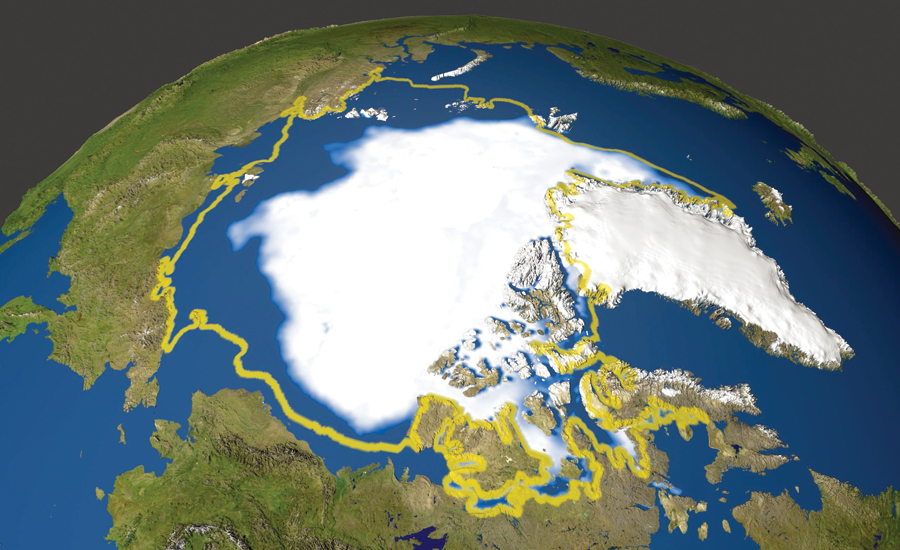

Summer ice cover is ‘virtually certain’ to survive if average global warming does not rise more than 1.5 degrees Celsius -
PARIS: There’s good and bad news for people, and polar bears, threatened by the Arctic’s vanishing sea ice, scientists said on Monday.
First the good news: summer ice cover is “virtually certain” to survive if average global warming does not rise more than 1.5 degrees Celsius (2.7 degrees Fahrenheit) above pre-industrial era levels, according to a study published in the journal Nature Climate Change.
“We estimate there is less than a 1-in-100,000 chance of an ice-free Arctic if global warming stays below 1.5 C,” James Screen and Daniel Williamson from the University of Exeter wrote.
That should come a relief to indigenous peoples whose way of life, and livelihood, depend on ice persisting through the summer months.
Already today, their houses are literally falling into the sea.
For polar bears, the stakes are even higher, experts say.
With their total population reduced to around 26,000, polar bears would struggle to survive without the floating ice platforms from which they hunt seals and other prey.
On a global scale, several million square kilometres of white snow and ice reflect most of the solar radiation that hits it back into space.
Replace this giant mirror with
deep blue ocean, and that heat gets absorbed instead, accelerating climate change.
Why a 1.5 C temperature limit?
That is the “aspirational” goal laid down in the 196-nation Paris climate pact, along side a hard target of under 2 C (3.6 F), long identified as the guardrail for dangerous warming.
A 2 C rise would give humanity a coin-toss chance — “about as likely as not” — of keeping the North Pole white, Williamson and Screen reported.
The researchers compared different climate models of sea ice loss with actual changes over the last decade, using only those that provided the best match for their projections.
Despite year-to-year fluctuations, long-term trends in the Arctic are unmistakable: the 10 lowest ice extents since 1979 — when satellite data began — have all occurred since 2007.
The record low of 3.41 million square kilometres in 2012 was 50 per cent less than the 1979-2000 average.
— AFP
Oman Observer is now on the WhatsApp channel. Click here



